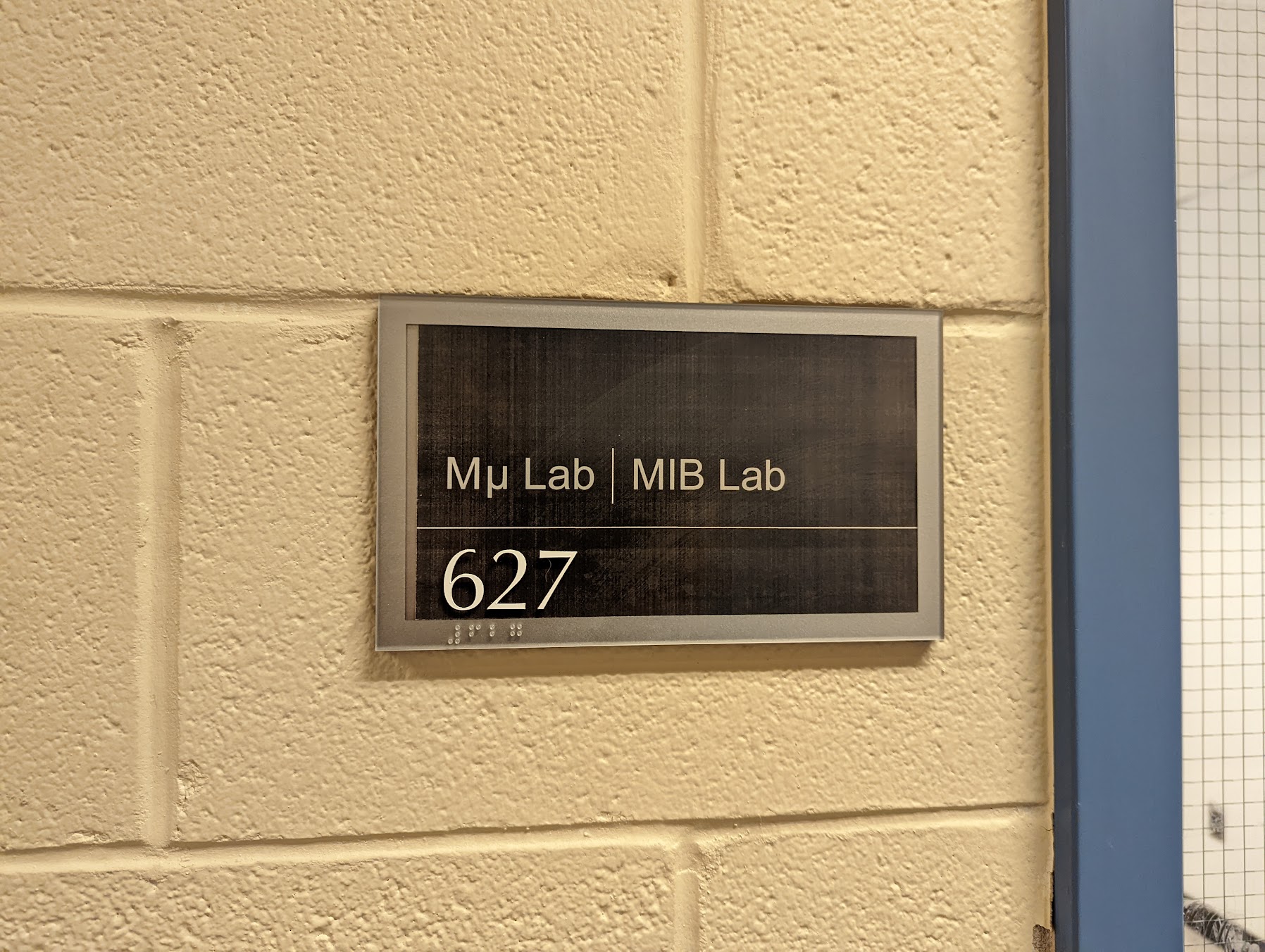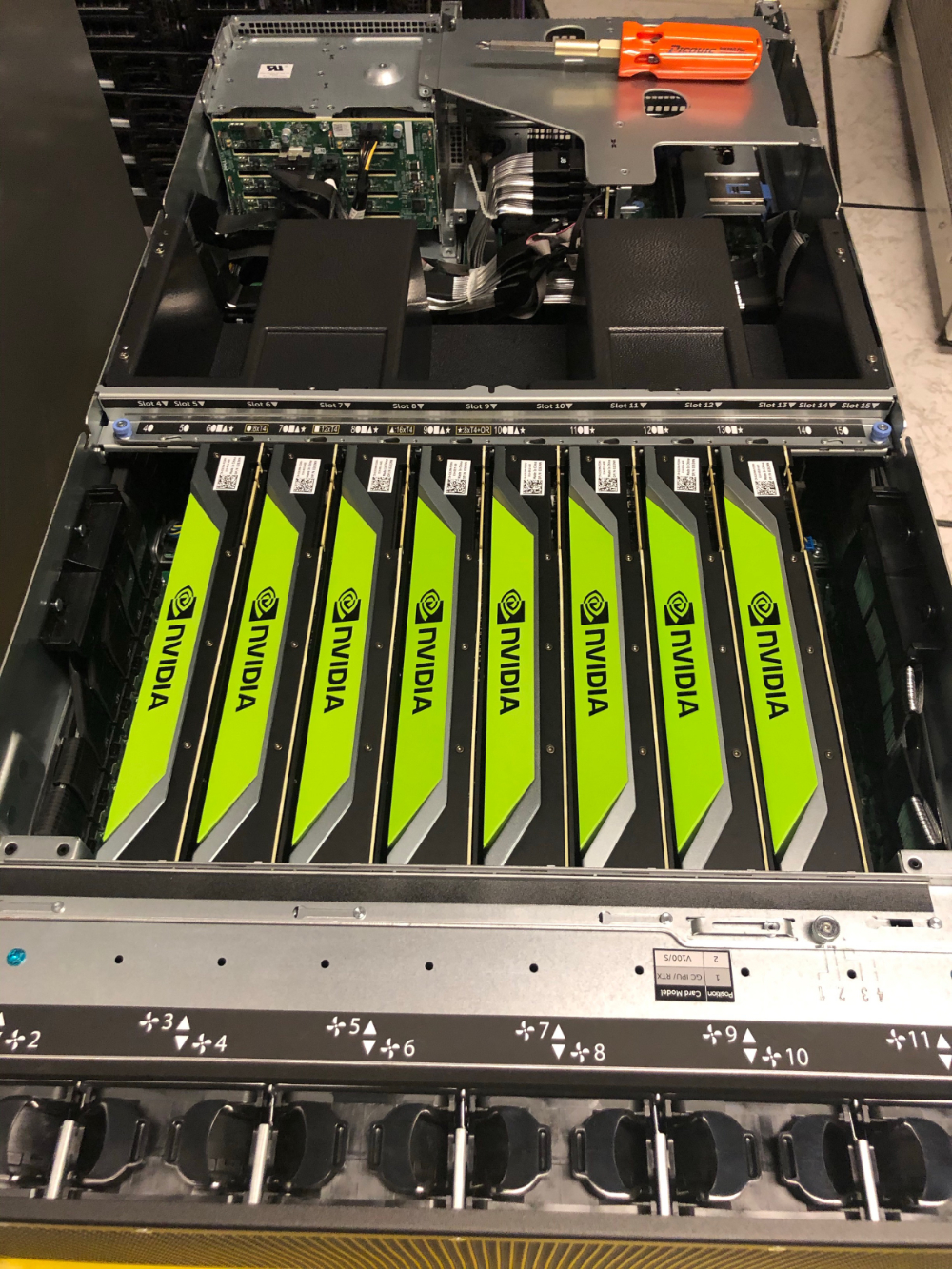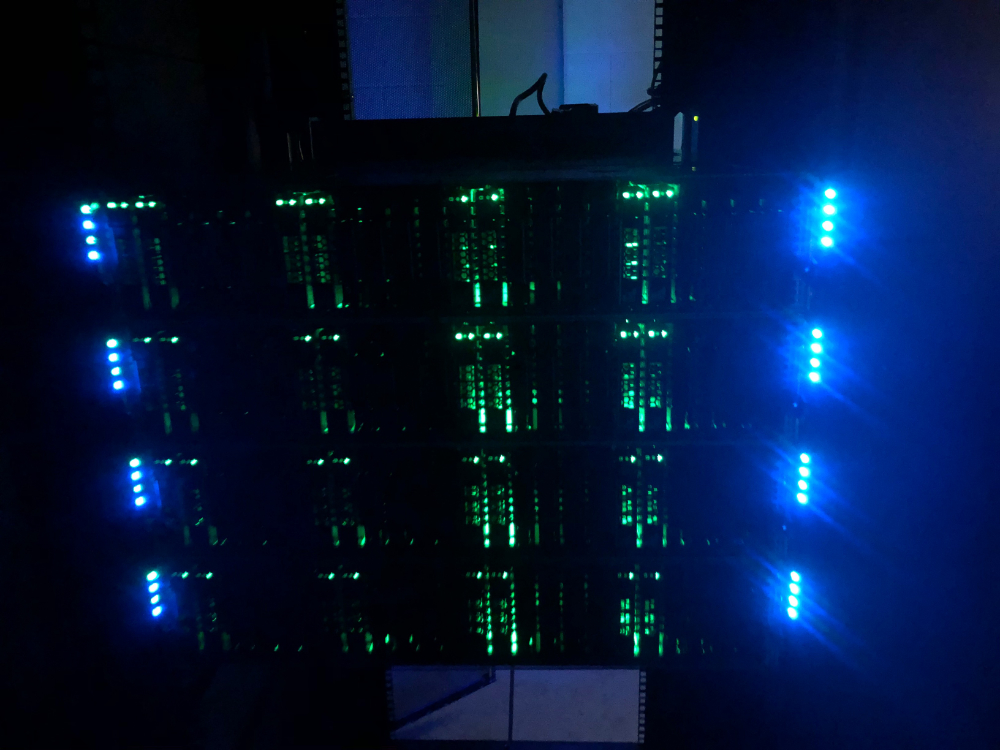Mu Lab
The Mu Lab was formed in the fall of 2020, in the midst of a global pandemic. We share a physical space with the Machine Intelligence & Biocomputing (MIB) Lab in Queen’s University’s Goodwin Hall.

|

|

|

|
Currently, the lab is undergoing a major transformation to become a research hub for automated agriculture. Stay tuned for more updates and photos!
Our gear
Deep Learning Compute
Due to the nature of our research, we have shared access to the growing collection of deep learning resources many of the labs (including ours) have been building at the Queen’s School of Computing. Here’s a sneak peak at the first spun up:

High Performance Compute
Another key aspect of our work requires high-performance single-threaded computation and simulation. For this, we have a set of 16 machines up and running:

|

|

Lab Policy & Code of Conduct
The Mu Lab is committed to providing a safe, inclusive, and respectful environment for all its members. To ensure that everyone is aware of the expectations and responsibilities of being a member of the lab, we collectively constructed a lab policy (the latest version found [here]).
We continually refine the policy, and share it here so that it may serve as a reference for other labs and research groups looking to establish their own guidelines. Shout out to Prof Julie Shah for the original inspiration and guidance on the initiative!
Land Acknowledgement
Members of the Mu Lab come from several places across the world. To better understand the legacy of those who cared, and continue to care, for this land before us, we (as a lab) collectively and intentionally educate ourselves on the history and status of the lands we grew up on and those we now call home. For the existing lab members, these include the Tyendinaga Mohawk Territory, Abenaki Ndakinna, Hiawatha First Nation, Mi’kmaq Eskikewa’kik, Squamish Nation, Anishinabek Nation, and Haudenosaunee Confederacy. We are humbled by the rich history and ongoing traditions of the original stewards of the lands we have, and now do, live on. The lab itself is located on Anishinaabe and Haudenosaunee territory, and we are committed to continuing our journey to educate ourselves on the ongoing and past colonial actions of where we are and how we might turn this understanding into meaningful action.
Resources
- Coursera course on Indigenous History in Canada
- Map of Territories, Treaties, and Languages
- Resources on pronouncing things correctly
- Kingston city land acknowledgement